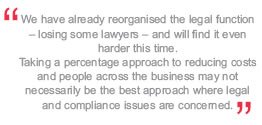Looking to the horizon – Simpson Thacher & Barlett
“Like Columbus crossing the Atlantic, we see signs of land ahead but we have no idea where we are or where it will be – Formosa or Hispaniola,” says Todd Crider, corporate partner with Simpson Thacher & Bartlett in New York.
Recent indices may have shown an upturn in deal activity, rights and bond issues, and a number of the investment banks may have unveiled tremendous profits, but drill a little deeper and it is clear that things are still not right.
“When we look at individual deals they are being done for clear, often defensive, reasons while overall acquisition finance and M&A levels are down to levels not seen since the start of the decade. Right across the economy there is nothing to suggest that the good times yet lie ahead.”
High yield debt volumes remain low and while there may be finance available for some strategic company transactions – with strong underlying assets – among lenders there remains little enthusiasm for the private equity, says Crider. There are still structural weaknesses.
“There are some good deals going through, but also good reasons why certain transactions are taking place. We all want to see ‘green shoots’ but really there is no evidence to support a sustained shift that it is yet possible to point to.”
Likewise, despite the headline profit levels recorded by a number of the major investment banks there remains a clear divide between the winners and losers, he suggests. “If we compare results then they are not universally positive. A significant percentage even of the investments banks’ profits have been generated by automated share dealing programmes. Retail and lending divisions remain weak calling into question a sustained upturn.”
Nonetheless bright spots are appearing, he says, albeit not focused entirely within the traditional New York transactional sphere.
“We are seeing a lot of investments now being channelled into places such as Brazil, where rights issues are oversubscribed, very large transactions are taking place and there is sustainable demand. We see hope, but not immediately on our own horizon.”











